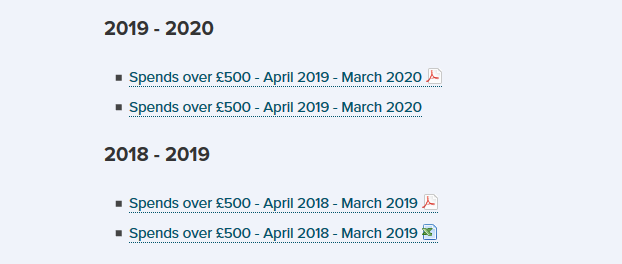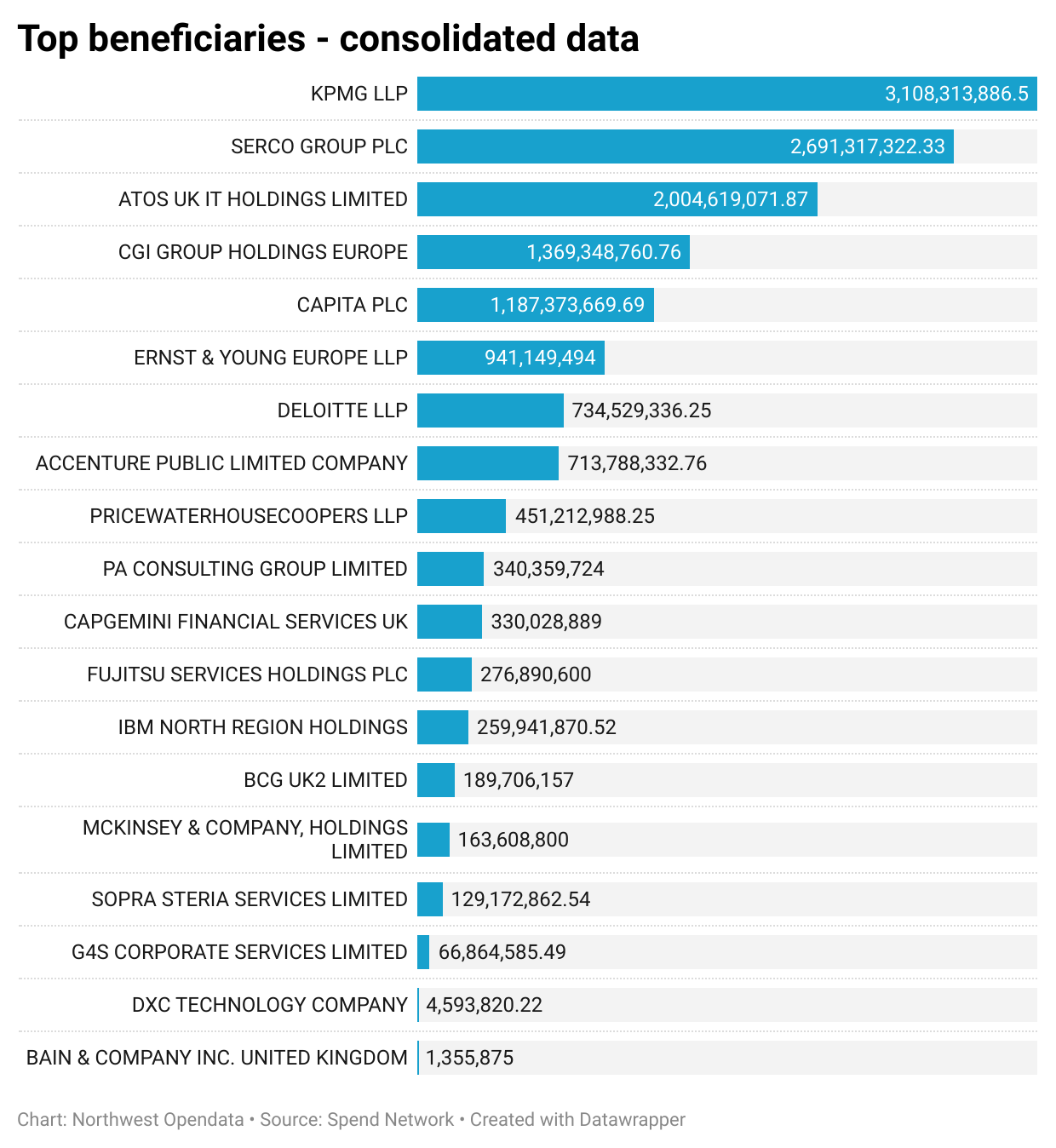Wigan Spends : A Quick Look at the Data
Posted : Blog Post : 13.10.2020 - North West Open Data
1. Introduction
I’ve just released a consolidated and curated set of the Wigan Council spending data over £500 for 2019. The following are some notes about accessibility and observations about the data itself. Details of the data set and the CSV file are available on Github.
2. Presentation and Accessibility
Wigan Council have their own opendata server at https://opendata.wigan.gov.uk/. Unfortunately their LGTC Expenditure data isn’t located there. It’s actually back on the main Council website

Data goes back to 2013 PDF and CSV are the two preferred formats but Q1 for 2019 is in Excel format. There is a description of the data published in PDF here. As the data is presented in Financial years I needed two file, the CSV file was UTF8 the other MS Excel 2007+
One file had 9 data items, the other had 4
File 1 : Row 1 9 : Beneficiary,
Date,
Period,
Cost Centre,
Department,
account,
Summary of Purpose,
Merchant Category,
Amount (Net of VAT)
File 2 : Row 1 4 : Beneficiary,
Date,
Merchant Category,
Amount (Net of VAT)
As I was only interested in 3 items I created a table for the data file with 9 items and loaded both files leaving may cells with null data.
I did note that many fields have only ‘#REF!‘ as values, the summary_of_purpose column was 25% ‘#REF!‘
2.1. Dates
-
Dates failed to import first time they were mixed formats, initially MDY then DMY
-
As the files covered 2 financial years I deleted out of range transactions
2.2. Amount
-
The money format included commas and these were removed after load and before casting to a numeric
-
There are no reimbursement data (ie payments made back to the council) in the dataset, the smallest amount is exactly £500. Have all amounts less than £500 been deleted?
2.3. Supplier Name
-
Again we have the use of ‘T/A’ in the beneficiary name about 7% (note to self : if name like ‘T/A’ and unmatched add a step to check if the second part of the split can be matched)
-
Care homes are also one of the primary causes of beneficiary names turning into accountancy line items
3. Results
-
There are 2587 recipients receiving 67306 payments in 2019
-
I’ve managed to match beneficiary name to Companies House, Ofsted, Charities, Care Quality Commission and NHS Datasets.
-
83% of beneficiaries have matched
-
Over 85% of total spend has been matched to an organisation
-
The Companies matching is the best quality and most comprehensive
-
Company number & SIC codes have been added to the dataset
-
More work needs to be done with Education/Charities and CQC
-
The top 50 beneficiaries below or on Datawrapper here

4. Conclusions
-
The limited set of data I extract here is actually quite good
-
590 companies matched the exact name in the Companies House dataset, that’s over 20%
-
Producing the data in a proprietary Excel format goes against LGTC guidelines
-
Large amounts of the data in the Excel file when converted to CSV via Google Sheets produced ”#REF!‘ values
-
Although the presentation of the data was adequate – I wonder why this is on the main Wigan website and not their open data webserver
-
Just considering the data present here when compared to Trafford’s dataset it has occurred tor me that there is a difference in scope of spending data, for instance Trafford report £38 million paid to HMRC but Wigan only report nearly £83,000
-
The lack of negative payments(reimbursements) also suggests that these two datasets may be less comparable than initially thought.